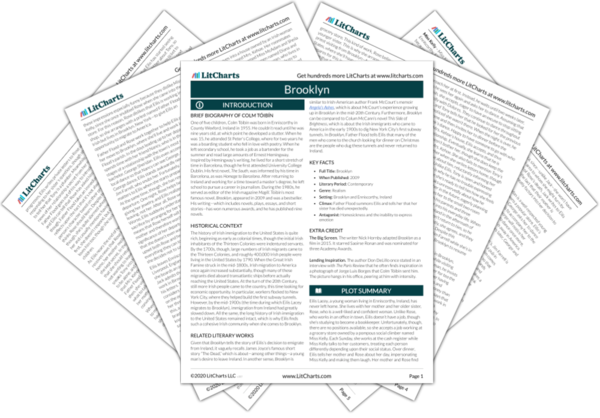Next
Summary
Brooklyn Study Guide |
Next
Summary
|
Welcome to the LitCharts study guide on Colm Tóibín's Brooklyn. Created by the original team behind SparkNotes, LitCharts are the world's best literature guides.

The Big Screen. The writer Nick Hornby adapted Brooklyn as a film in 2015. It starred Saoirse Ronan and was nominated for three Academy Awards.
Lending Inspiration. The author Don DeLillo once stated in an interview with The Paris Review that he often finds inspiration in a photograph of Jorge Luis Borges that Colm Tóibín sent him. The picture hangs in his office, peering at him with intensity.